#Santeria beads
Text
Spiritual Beads
They are used to count prayers, repetitions, chants, devotionals, and meditation. In some cases, each bead symbolizes a particular event or concept. Beads can be made into bracelet, necklaces use to decorate tool, rattles,bells or any scared object and made from all types of materials.
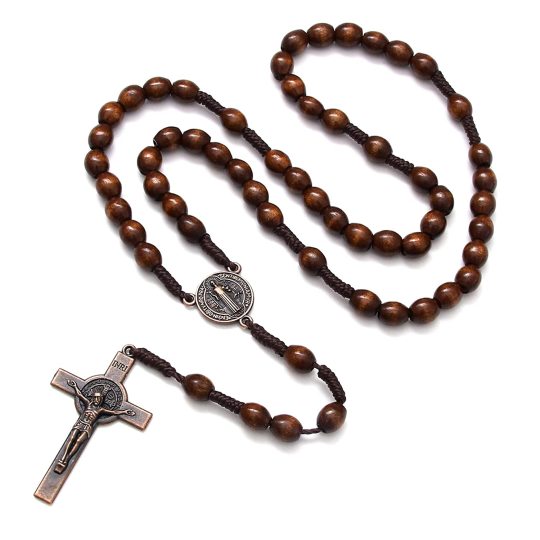
Catholic beads
Origin: The origin of prayer beads dates back to ancient history. Prayer beads have been used by different religions such as Hinduism, Buddhism, Islam, Sikhism, Bahá’í Faith, Shamanism and Christianity. Therefore, Christianity was not the first religion to adapt to this tradition. In fact, the Bible does not speak about prayer beads. Neither Jesus, not His disciples or the early church used prayer beads. So some religions like Judaism won't use them. On the other hand prayer beads can be used and made for prayer but also for devotees of a pacific Saint, Deity, Spirit, or Ansestors to help you connect to that spirit. There are a variety of different beads made for different spiritually so choose the one that best fit you in your practice.

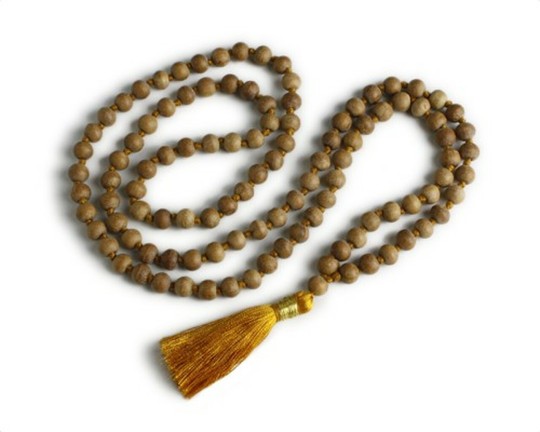
Above are beads for pagan/wiccans and need use Buddhism.
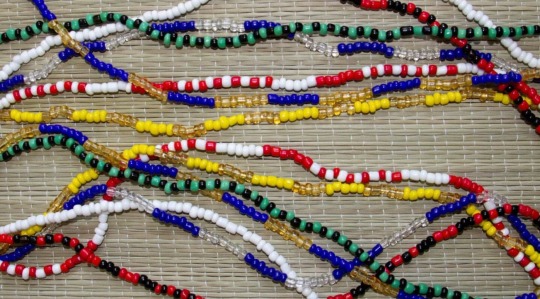
In the Orisha/Lukumi Tradition, Elekes ☝️ are beaded necklaces in patterns and colors of the Orisha. Once an individual’s head is crowned to an Orisha, other adornments such as bracelets and necklace or constructed indicating the initiates head Orisha is worn indicates which Orisha you walk with or became a priest/ess of.
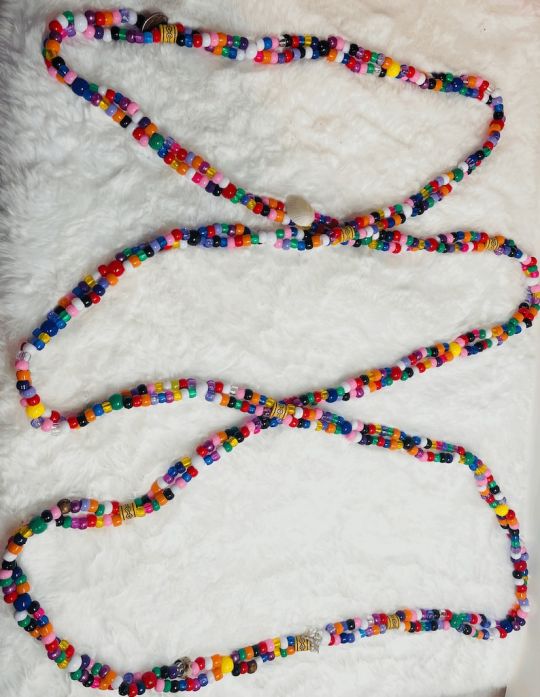
In Vodou these aren’t considered necklaces, even though they make look like necklace in those pictures which are called kolye, and translates to necklace there not worn as such. Kolye are the mark of an initiate; They're made for you when you enter the djevo (chamber) and how it's worn shows the type of initiation you had. What is on/in a kolye represents specific lwa as well as specific concepts and/or pwen specific to spirits.
It’s a pretty important thing to wear and it serves important purposes during initiation. (no matter what the internet tells you, in haitian vodou they don't wear a necklace like Orisha religions do, But in some cases in some regions of Haiti the kolye is worn as a necklace) Houngans during a ritual carry the machete and wearing their kolye that indicate he is a houngan asogwe, and a manbo carries a dwapo wears a kolye across her body, which says that she is a manbo asogwe (the highest initiatory rank in the religion) and the smaller kolye's worn around the neck says that a person is initiated, but is not a manbo asgowe.
#Spiritual beads#Prayer beads#Types of religious beads#Vodou beads#Santeria beads#Rosery beads#Wiccan or pagan beads#Spiritual#like and/or reblog!#Comment#google search#follow if you like
13 notes
·
View notes
Text
ILEKE BEADS IN THE IFA TRADITION
Ileke beads, sometimes referred to as Ifa or Orisha beads, are a type of beaded jewelry that can be found in Nigeria and other parts of Africa. The word ileke means “bead” in the Yoruba language. Seeds, beans, and stones are kneaded together to form these elaborate fetishes. The beadwork is created by stringing together ornate objects of various shapes and sizes to form patterns.
These totems are used by some people as a form of currency, while others use them for religious or spiritual purposes. Notably, ileke beads are an important part of the Ifa religion and other African traditional religions. They are used in many ceremonies and rituals similar to rosary beads in other religions like Islam, Catholicism, Buddhism, etc.

COLOR MEANINGS AND ORISHAS
Ileke beads come in a variety of colors and styles. However, the most common color is white, as it can be used for various deities or Orishas. However, they can also be found in a mixture of black, green, red, and other colors that symbolize different Orishas.
Here are some examples below:
White for Aje
Yellow for Oshun
White for Obatala
Red and black for Eshu
Green and black for Ogun
Green and yellow for Orunmilia
Note that the color of the beads associated with each Orisha can vary by house and tradition. For instance, Ogun is often represented by the color red in diasporic traditions like Lucumi and Santeria, etc. So, you may find discrepancies in the colors as outlined above.
THE PURPOSE OF THESE TOTEMS
The ultimate purpose of ileke beads is for spiritual protection. They ward off evil spirits and bring good luck. The Yoruba people believe that they have spiritual power. They are a symbol of wisdom and knowledge and are used in many ceremonies and rituals. These spiritual totems are also said to be blessed by the gods, which makes them even more special.
An Ifa devotee should always wear ileke beads on the wrist or around the neck. These blessed adornments can protect the wearer from the conspiracy of enemies and onlookers. They can also keep death at bay and sickness away.
Ileke beads should be consecrated by an Ifa priest or priestess in order to serve their primary function. They can be bought from spiritual suppliers and practitioners. However, they won’t possess the essence of an Orisha or spirit unless they are consecrated or blessed.
WHERE TO FIND ILEKE BEADS
If you want to wear ileke beads, it is best to consult with an Ifa priest or priestess to see if they are appropriate for you. They can be worn by anyone, but it is important to ensure that they are consecrated when using them for spiritual purposes. Also, you should be aware of any taboos associated with wearing these totems before purchasing them.
If you are interested in learning more about ileke beads and the Ifa religion, you can purchase them in our online store. You can also visit a local Ifa temple or shrine to see ileke beads in person.
5 notes
·
View notes
Photo

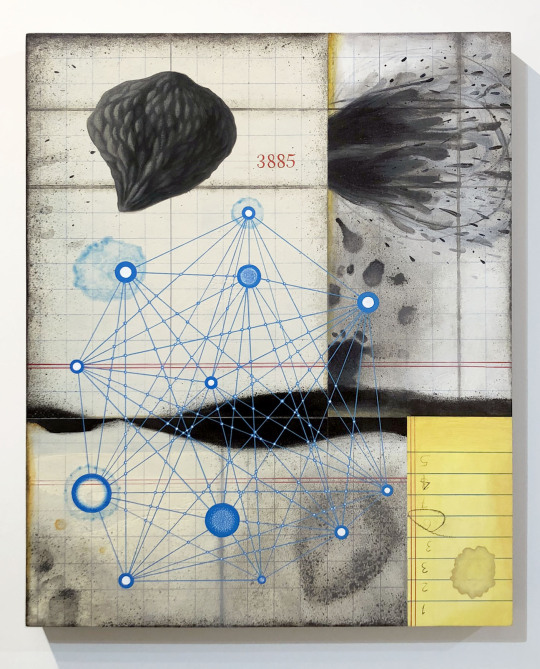




Renée Stout’s exhibition at Marc Straus in NYC, Navigating the Abyss, presents a collection of her recent work in various mediums. From sculpture and painting to photography, her skillful and inventive work draws you in.
From the press release-
Starting out as a photo-realist painter depicting life in everyday urban neighborhoods, Stout soon developed an interest in the mystical and spiritual traditions in African American communities. Fascinated with fortunetelling and the healing power of Hoodoo, Vodou and Santeria still practiced within the African Diaspora in the American Southeast and Caribbean, she delved into ancient spiritual traditions and belief systems. She has drawn inspiration from a wide variety of sources such as current social and political events, Western art history, the culture of African Diaspora, and daily city life. While her artistic practice is rich with references and resonances, her works are eventually unique manifestations of her own imagination, populated by mysterious narratives and imagined characters derived from the artist’s alter ego.
In this exhibition, we encounter a group of portraits depicting Hoodoo Assassins and Agents (#213 and #214) who, in Stout’s imagination, are healers, seers, and empaths from a Parallel Universe in which fairness and balance rules. Erzulie Yeux Rouge (Red Eyes) is a spirit from the Haitian Pantheon of spirits whose empathic nature makes her a fierce guardian or protector of women, children, and betrayed lovers. Ikengas, originating in the Igbo culture of Southeastern Nigeria, are shrine figures that are meant to store the owner’s chi (personal god), his ndichie (ancestors) and his ike (power), and are generally associated with men. Stout’s Ikenga (If You Come for the Queen, You Better Not Miss) is a powerful female figure with her breasts and horns turned into weapons, and she is adorned with jewels and charms to boost her powers. Beyond the playful yet powerful imagination of these female characters are serious undertones of political commentary as Stout ponders the concepts of these deities while witnessing the recent rulings in our society that infringe on women’s rights.
In Escape Plan D (With Hi John Root, Connecting the Dots) Stout maps out her potential escape to the Parallel Universe when the daily news weighs unbearably on her psyche.
Visions of the Fall, in Thumbnails is a series of five small paintings that comments on the current state of our world and its imagined future with the titles as upcoming stages of its evolution.
American Memory Jar is an entirely black sculpture consisting of a glass jar covered with thin-set mortar, plastic and metal toy guns, topped with a doll head and adorned with a bead and rhinestone cross pendant. Memory Jugs are an American folk-art form that memorializes the dead adorned with objects associated with the deceased. Stout’s jar is a bitter but painfully accurate assessment.
While Stout’s work alludes to history, racial stereotyping, societal decay, and a set of alarming tendencies in our socio-political structures and ecosystem, it also reveals possibilities and the promise of healing. Various works reference healing herbs, potions, and dreams. Herb List, Spell Diagram and The Magic I Manifest speak of Stout’s belief in the power of consciousness, in the existence of more solid and fertile grounds, and of individual responsibility.
There is one overarching narrative that clearly emerges from Stout’s work – her personal history and spiritual journey as a woman and as an artist.
This exhibition closes 3/5/23.
#renée stout#marc straus#marc straus gallery nyc#nyc art shows#painting#sculpture#mixed media#art installation#art#art shows#christopher wool
5 notes
·
View notes
Photo
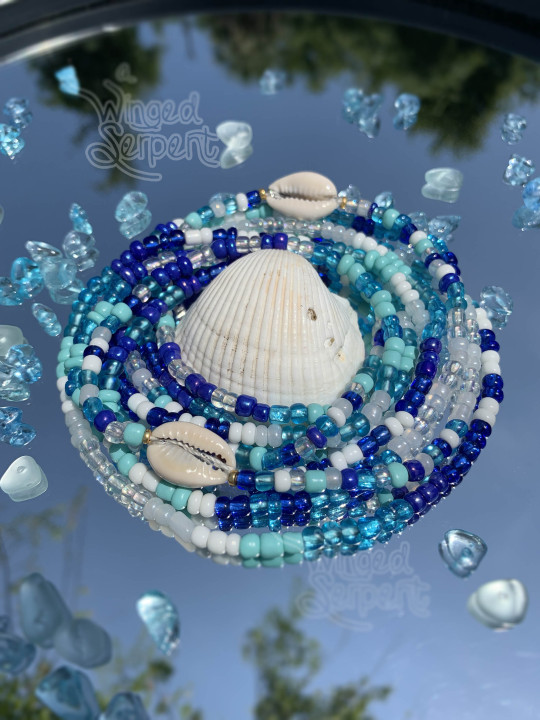
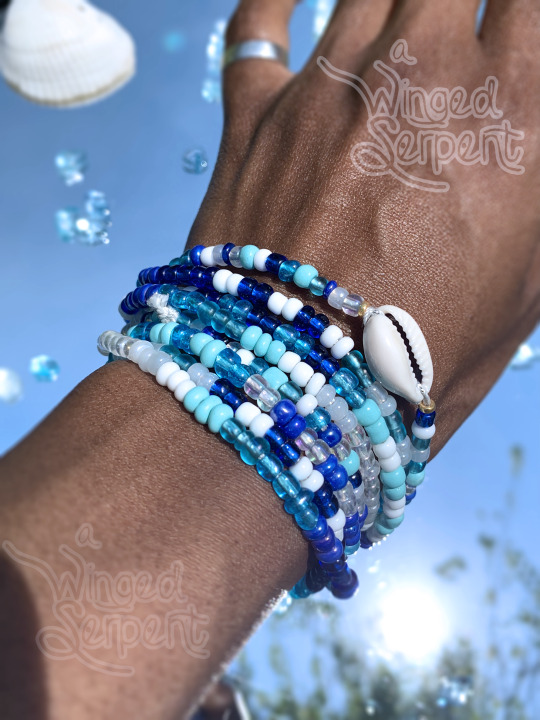

🐚Yemonja/Yemaya body beads/ileke set 🌊
#water#summer#ocean#waves#shell#cowrie#african beading#santeria#hoodoo#yemaya#ifa#orisha#yoruba#beaded jewelry#blue#teal#white
208 notes
·
View notes
Text

Santa Muerte Rosary
Available in my Etsy shop!
https://www.etsy.com/shop/Hellion81
#santa muerte#holy death#saint#santeria#rosary#rose beads#pendant#necklace#jewelry#dia de los muertos#white beads#johnny hellion
5 notes
·
View notes
Text

#baby witch#aesthetic#amethyst#necklace#rosary beads#healer#spiritual#septum piercing#angel#santeria#emo#goth#goth gf#lips#alternative#grunge girl
10 notes
·
View notes
Text
The Craft, Labels, and the Ego
As witches of any caliber, we embrace the craft as a way to own our freedom and autonomy. As humans, we have been conditioned to seek out spaces we feel connected to. Even if this is a part of our survival impulse, how do we find a way to balance out our base self and higher self? Is this even possible?
Absolutely.
The very definition of being a witch is have a strong understanding of self. If we realize that our unique abilities and interests are going to be tailored specifically to our experiences, I honestly believe that whatever the circumstances are that surround our particular brand of witchcraft become irrelevancies.
There are times where we get sucked back into victim mentality mode, and they do happen. I often find myself wanting to complain about not seeing enough witches of African descent in the pagan/occult/shamanic community, but I have to stop myself because I have to ask what am I mad about.
It usually boils down to "I'm upset because I feel like the people who look like me aren't stepping into this awesome thing that brings me great joy!".
I have started to say "Wow, I have the chance to connect my people to this awareness I have found that has eliminated so much of the suffering I thought I felt." instead because I'm shifting my focus to manifest what I want.
In the past 5 years of my witchy journey, I have realized that I am not who I thought I was. This realization has come through the most bitter medicine. I have dark skin, locked hair, tattoos, piercings, a vagina, am an immigrant. Spirit has revealed to me that these labels are not there for me to become them, they are here to teach me a lesson.
Black skin is hated on this plane of existence both openly and behind closed doors. This is not for me to cling to the blackness, but to understand what it feels to thrive despite hatred.
My lifestyle choices are not here for me to isolate myself in a crystal house with servitors keeping people out, they are mine to teach me the sacred precious gifts that are the earth's treasures.
My sexuality and gender identity and my genitals are not mine in this incarnation to put restrictions on what I give permission to society to do with me. They are mine at this time to understand the many planes of emotional existence. To feel masculine, feminine, and genderless energies surge through me in a unique blend that is Venus.
I say these things not to discourage you, but to empower you to use the uniqueness of your situation to lift yourself out of the things we otherwise label as negative or isolating.
#occult#blackgirlmagic#witches#meditation#witchblr#african american witch#love#shamanism#divination#goddess#paganism#santeria#tarot#mala beads#sorcery#spirit guide#spiritualawakening#yogaeverydamnday
7 notes
·
View notes
Photo
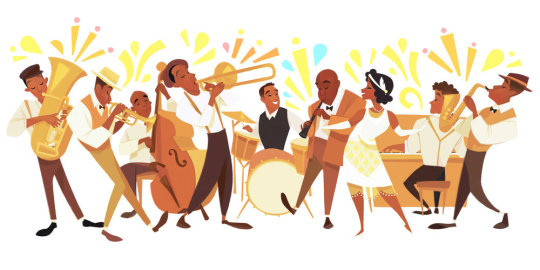
Possessed: Voodoo’s Origins and Influence from the Blues to Britney
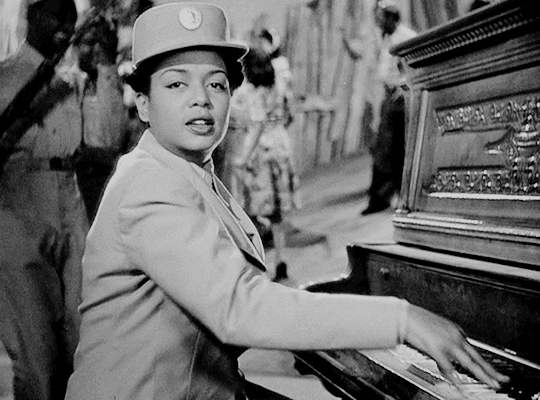
Blissed-out, ecstatic union with our divine selves — we seek it at raves and rock concerts, and in the desert with the Burning Man. I try to get there when I’m jamming with my band — but I didn’t realize until I wrote The Language of the Blues: From Alcorub to Zuzu how much this longing relates to West African spirituality, and the Voodoo concept of possession.
Vodou (the proper Kreyol/Creole spelling of Voodoo) is a neo-African religion that evolved in the New World from the 6000-year-old West African religion Vodun. This was the religion of many slaves brought from West Africa to the Americas and the Caribbean.
Vodun was brutally repressed by slave-owners, yet its powerful beats, ethics and aesthetics endured. We owe our concepts of cool, soul and rock and roll to it.
The roots of rock are in a West African word for dance — rak. As Michael Ventura wrote in his important essay on rock music, “Hear that Long Snake Moan”:
The Voodoo rite of possession by the god became the standard of American performance in rock’n’roll. Elvis Presley, Little Richard, Jerry Lee Lewis, James Brown, Janis Joplin, Tina Turner, Jim Morrison, Johnny Rotten, Prince — they let themselves be possessed not by any god they could name but by the spirit they felt in the music. Their behavior in this possession was something Western society had never before tolerated.
Vodou possession is not the hokey demon-possession of zombie movies; it’s a state of union with the divine achieved through drumming, dancing and singing. It’s becoming “filled with the Holy Ghost” in the Pentecostal Christian tradition or attaining yogic bliss through the practice of kirtan, singing the names of God — Hare Krishna, Hare Krishna.

In the Yoruba culture of West Africa, being able to connect with one’s inner divinity is called coolness (itutu). In Yoruba morality, generosity indicates coolness and is the highest quality a person can exhibit. In American culture, we say that nice person is cool, or that a musician “has got soul.” We notice “Southern hospitality.”
The Trans-Atlantic slave trade carried these ideas to the New World, particularly as slavers burrowed inward from Senegambia on the West African coast to the Kingdom of Dahomey, a Vodun stronghold.
Dahomey spread across much of today’s Togo, Benin and Nigeria and was heavily involved in the slave trade. Vodun practitioners were shipped overseas by the thousands when the Fon people of Benin conquered their neighbors, the Ewe, in 1729. Many Fon were also kidnapped and traded into slavery in exchange for textiles, weapons, brass pots, Venetian beads and other European goods.
Vodun is a Fon-Ewe word meaning God or Great Spirit. This supreme creator was represented as the giant snake Dan carrying the universe in its coils. Today, in Haiti and American Vodou strongholds like New Orleans, Dan is worshiped as Damballah, the Grand Zombie (the Bantu word nzambi means God). He’s John Lee Hooker’s “Crawling Kingsnake”.
Branching off from this almighty God-force are spirit-gods called loa. During Vodou ceremonies, a loa may descend the center post of the temple to possess or “ride” a worshiper who has reached a sufficiently high state of consciousness. The morality implicit in this is stated in the Haitian proverb, “Great gods cannot ride little horses.”
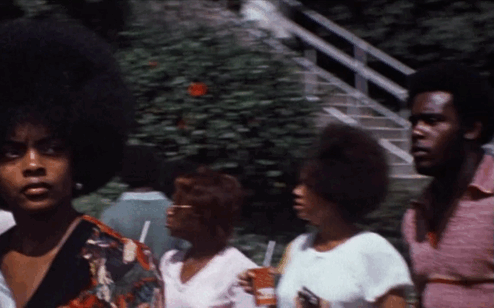
Vodun practices like drumming were definitely noticed by nervous colonists who had imported fierce warriors and tribal priests to work their farms. After a deadly rebellion in the South Carolina colony in 1739, the colonists realized slaves were using talking drums to organize resistance. The Slave Act of 1740 in South Carolina barred slaves from using “drums, horns, or other loud instruments.” Other colonies followed suit with legislation like the severe Black Codes of Georgia.
Soon, religious repression was in full swing. Slaves caught praying were brutally penalized, as this excerpt from Peter Randolph’s “Slave Cabin to the Pulpit” recounts:
In some places, if the slaves are caught praying to God, they are whipped more than if they had committed a great crime. Sometimes, when a slave, on being whipped, calls upon God, he is forbidden to do so, under threat of having his throat cut, or brains blown out.


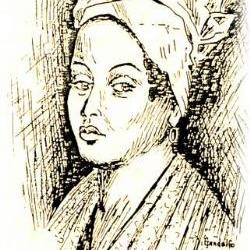
Vodun practitioners taken as slaves to plantations in Haiti, Cuba, Brazil, and Jamaica were also prohibited from practicing their religion. But enslaved Vodun priests arriving in the Catholic West Indies quickly grasped similarities between their tradition of appealing to loa to intercede with God, and Catholics praying to saints for intercession. By superimposing Catholic saints over the loa, slaves created the hybrid religions Santeria (saint worship) in the Spanish Islands, Vodou in Haiti and Candomblé in Brazil.
On Aug. 22, 1791, Haitian slaves revolted on a signal from Vodou priests, who consulted their oracle to determine which military strategies would succeed. The revolutionaries defeated Napoleon Bonaparte’s army and declared independence Jan. 1, 1804, establishing Haiti as the world’s first black republic. Freaked by a successful slave revolt, the United States and Western Europe slapped economic sanctions on Haiti, turning the prosperous colony into an impoverished state that could no longer sell the products of its fields.
In 1809, Vodou arrived in the United States en masse when Haitian slave owners who had fled to Cuba with their slaves were expelled. Most relocated from Cuba to New Orleans, nearly doubling the city’s size in one year. Today, 15 percent of New Orleans practices Vodou, and it’s popular in other U.S. cities with African and Haitian communities.
Among the arriving Haitians was Marie Laveau. She became the leader of New Orleans Vodou practitioners in 1820 when she was elected the human representative of the Grand Zombie. (Former White House Social Secretary Desirée Rogers is descended from Marie Laveau.)
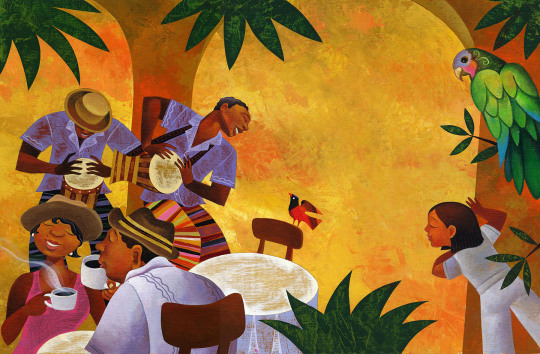
Laveau kept a python named Zombi, and danced with it on her shoulders while presiding over ceremonies. This image was appropriated, with other Vodou nods, for Britney Spears’s “I’m a Slave 4 U” performance at the 2001 MTV Video Music Awards.
The sensationalistic 1884 book Haiti or the Black Republic by Sir Spencer St. John, slammed Vodou as an evil cult, with gruesome descriptions of human sacrifice and black magic — some of which had been extracted from Vodou priests via torture. It became a popular source for the Hollywood screenwriters who began churning out voodoo horror flicks in the 1930s.
The first musician to bring pop-Voodoo imagery to the stage was Screamin’ Jay Hawkins, who would rise from a coffin onstage with a bone in his nose. Hawkins had intended for his hit record “I Put A Spell On You” to be a soulful ballad. But once the producer “brought in ribs and chicken and got everybody drunk, we came out with this weird version,” Hawkins admitted, adding “I found out I could do more destroying a song and screaming it to death.” Hawkins kicked off the undead craze among rockers like Alice Cooper and Marilyn Manson.
Meanwhile, despite the severe repression, Vodun practices crept into Southern black churches. Descriptions of black Baptist church services in the late 1800s and early 1900s depict the congregation dancing in a circle in a “rock” or “ring shout” as they follow the deacon, who bears a standard.
It was the deacon’s job to whip parishioners into a frenzy of fainting and speaking in tongues called “rocking the church.” The concept of a deity “riding” with a worshiper transferred to these Christian churches, where the cry “Drop down chariot and let me ride!” was often heard, as well as “Ride on!” and “Ride on, King Jesus!” This became the solidarity shout, “Right on!”
Blues singers fronting big bands, like Joe Turner and Jimmy Rushing, copied the way church solo singers belted over the choir. The radio beamed this new “shouting blues” all over black America. It was picked up by country blues singers like Muddy Waters and T-Bone Walker, who had moved to Chicago and used it with their new electrified bands. These, in turn, inspired rockers like Janis Joplin, Jimi Hendrix, The Beatles and The Rolling Stones
Africans brought here as slaves carried with them incredibly strong aesthetic, ethical and cultural values that not only withstood the shock of their forced transplantation to the New World, but transformed and invigorated it. Their influence made us uniquely American. It’s why we respond to that Voodoo beat.
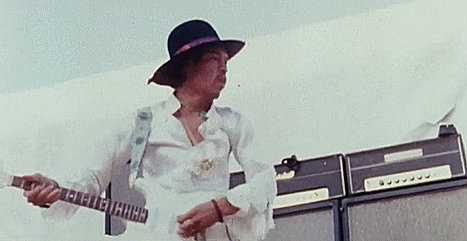
#africans#african culture#vodun#vodu#kemetic dreams#jimi hendrix#blues#jazz music#jazz#yoruba#igbo#africanspirituality#africanamericans
826 notes
·
View notes
Text
SACRED RATTLE THE POWER'S IN YOUR HAND.

Just like the post I did on bells a rattle is not part of traditional hoodoo but if this is the item you feel attracted to I would suggest it.
One thing that every tradition, every culture, and almost every spiritual practice on earth shares in common is the use of the Sacred Rattle. Whether the rattle is a coconut or gourd maraca, filled inside with sacred seeds, or a latticework of glass beads or cowrie shells woven into a net and covering the outside of a dried gourd, such as it is with the Shekere or the cabasa; or a stick with shells, bones or nuts tied to one end.
The rattle in its many forms and shapes is one of three man made musical instruments found in some form in every culture and country. “The others being the drum and fluits.
In many places around the world the rattle always uses by individuals of power, such as a Shaman, witch doctor or Medicine men, conjure men etc. There are times that the Maraca and Sacred Rattles were viewed by Christians as the Devil’s instrument..
The various African and Indigenous earth related spiritual and religious systems within the Americas has and to this day uses its sacred rattle. Haitian Vodou has its Asson, Cuban Santeria uses its Asheke, Dominican 21 Division uses the Tcha Tcha, and Puerto Rican Sanse uses the Amaraca, which is also called the Matraca or simply la Maraca. The Caribbean Taino Bohique and Bohitu “Chamanes / Shamans” as the Shamans in every other culture also treasured their rattle.

The Maraca (rattle) is an instrument of great power, and similar to that of a European wand, used by wiccans, pagans or other magical systems.
Used for: These rattles are used to communicate with the realm of spirits, and summon deities. They could repel or vanquish unwanted spirits, heal, bless, activate the healing properties of roots, herbs, talismans, amulets, beads and stones. Like the European Wand, the sacred rattle is an extension of the body and works as the pointing finger in which we get our desires, and will pointed and focused outwards from the body. The sacred rattles are emblems that which is used to seek that which is Holy, and it establishes a connecting link between the material world and the spiritual realm. Through the proper use of the rattle, the Shaman could manifest the presence of spirits and deities.
Sound: The Maraca or Sacred Rattle works through sound vibrations, and is always used to concentrate a sacred space, and create protective barriers. In Haitian Vodou the Asson as is the Sanse Amaraca is used to summon the Loa, the Sances or the Messengers in Christianity uses a bell to call down saints, angels etc. While at the same time they can also ward of negative earth bound spirits which often get confused or can not tolerate the sound frequency. It literally acts as a Rattlesnakes rattling. Like the snake its rattling tail lete predators or unwanted energies and vibrations know that you acknowledge their presence.
Cleansing: Along side of herbs, tobacco, blessed waters and salt the sacred rattles are used for cleansing an individuals aura. It helps the practitioners of Shamanism, Sanse and Vodou in opening up blocked energy fields and help in binding or fixing weak or torn layers of the auric layers, which helps in re-establishing energy flow known as Ashe and removing psychic dirt or unwanted energy.
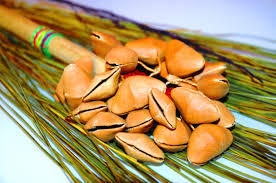
In Haitian Vodou they have a beautiful and unique sacred rattle which is unique to Haitian Vodou alone called the Asson. The Asson takes three different instruments and combines them into one. The rattle, the shekere and the altar bell.
In Sanse they don't combine the three into one, but use them separately and as I have stated often use them simultaneously.
The use of the sanctus bell is highly used in spiritual masses like Catholicism, lets all those know who have come to attend the event or church. In this case a supernatural event that's taking place before the altar. It is also rung heavily when a medium is about to mount a Loa or Spirit as a protective measure so that no earth bound or malignant force enters.
While the Rattle symbolizes the masculine phallic symbol, the bell represents the joining of both, the joining of the phallic with the yonic or vulvic “womb or vagina” to create life. The tongue or clapper of the bell is often made of two parts and symbolize the male semen and the female clitorus. (Bet you didn't know that) don't judge I read a lot) 😁
The ball part of the rattle can also be viewed as a womb, the sacred circle and earth. ”Present day Church bells derive from ancient Pagan traditions and not the other way around as most would have you believe. The bells are always rung to let those know a ceremony is to begin and when a ceremony is to end.
In traditional magic metal for bells should be iron, brass, or silver, and they are always kept on the house altars and shrines. Bells can be hung near doors on windowsills, outdoors and indoors. As the wind blows on bells and chimes it acts as a repellent for unwanted vibrations. Again sound vibrations very powerful.
Hope you enjoyed this post let me know your thoughts..
#Ritual rattle#Vodou rattle#Sound magic#Voodoo#Spiritual work#like and/or reblog!#likeandfollow#google search#Spiritual vibrations#Traditional hoodoo#Southern voodoo#Sacred rattle#follow my blog#like and subscribe#message me#ask me anything#Updated post
10 notes
·
View notes
Photo

Other Names: La Sirene, Mommi, Nana Buruku, Iemanja, Iemaia, Yemalla, Yemanja, Yemoja.
It is believed Yemaya gave birth to the moon, the stars, the sun, and nearly all of the Orishas. Yemaya exists within and influences over the oceans, seas, and lakes. Also recognized as the Mother of All, she consequently rules motherhood. Since all life began in the sea, the amniotic fluid inside the womb is a representation of the sea. The embryo needs to change and grow in the configuration of a fish ahead of becoming a human baby. To the human eyes, Yemaya appears as a mermaid, and this is how she is normally represented. This brings up her observed form of Mami Wata religion of the ancient water deities that were portrayed with upper bodies as human and fish or snake lower bodies, which are not part of the Yoruba pantheon of the Orishas. Yemaya is connected with Our Lady of Regla. Along with the basis of all manifestations, Olokun the center of all wealth, Yemaya provides as easily as her sister Oshun does. Seven is her number. The color pattern of interchanging seven white and seven blue are her sacred bead configuration. Yemaya wears seven skirts in the colors of blue and white. Similar to the seas and lakes, she is profound and unknowable in its entirety. As Okuti, she is the queen of witches, who carries deep, dark secrets, especially for hexes and curses. With a temperament of being nurturing, loving, direct, and frank, she is Invoked to remove the obstacles, protect the female, in all things to do with motherhood, meditation, clairvoyance, calm seas, and alike. Yemaya enjoys rich and delicious foods, such as guinea hens, rooster, and ram, which she shares with Chango as well as kola nuts, red palm oil, fish, cantaloupe, berries, watermelon, and coconut.
Symbols: Anything Ocean-related, especially Shells, Fish, Dolphins, Doubled Tailed Mermaids, Seven Silver Bracelets, Mirrors, and a Necklace made with Beads.
Feast Days: January 1st, February 2nd (in Brazil), Mother’s Day, September 7th (in Santeria).
Planetary: Moon. Astrology: Cancer. Tarot: The Empress, Three of Cups.
Chakra: The Heart.
Corresponding Gemstones: Aquamarine, Blue Topaz, Blue Lace Agate, Pearls, Mother of Pearl, Silver.
Animals: Dolphins, all types of Fish, Water Birds Such as Swan, Duck, Geese, Blue Butterflies, Sea Horses.
Tools: Anchor, Boat Steering Wheel, Life Preserver, and Oars.
Beings of Equivalent Strength: Egyptian Goddess Isis, Norse Goddess Frigg, Chinese Goddess Kuan Yin.
12 notes
·
View notes
Text
Basics #2 - Lunar Eclipses
It’s Monday, May 26, 3:22 A.M. MST. The penumbral portion of the eclipse started about 20 minutes ago.
I went out to go look, setting my crystal box and 3 jars of water on the hood of my car. I’m sad that I can only see it from the front yard -- my rituals and spells will definitely be indoors, given my neighbors will be leaving for work soon.
This post is gonna have to be a bit less polished, mostly because I’m already exhausted from battling misinformation about the Eclipse on social media for two nights straight.
What The Hell Is A Super Blood Flower Moon Eclipse?
Super refers to the size because the full moon will be very close to the earth in its orbit. We’re only calling this one a blood moon because it will turn red as the eclipse starts. The flower moon is the actual seasonal name for this moon ... moon names come from a variety of indigenous cultures and celtic lore. An eclipse is when the shadow of the earth covers the moon because the sun is directly opposite of the moon when all three are lined up. ☀️🌎🌕
My First Encounter
I last saw a blood moon eclipse in the spring of 2014. I was a very new witch at the time and all I did was watch it, drink tea, and take selfies to show how cool I was watching the moon and all.
My Ritual:
🌕 Clean my room and my altar
🌖 Shadow Work - Tarot reading about my bad habits
🌗 Shower
🌘 Smoke cleanse myself and my room
🌑 Write about and banish habits that no longer serve me
🌒 Charge a sigil for weight loss
🌓 Enchant / charge my African Waist Beads
🌔 Manifest rapid change and willpower
I haven’t restocked my candles yet, so I will be mostly making sigils and using chaos magic tonight.
As I said earlier, I’m charging my crystals and some moon water. I set all of my crystals out -- though I rarely use them these days -- and three mason jars of tap water -- one for drinking, one for dowsing myself with in the shower, and one for spellwork.
Arguments in favor of eclipse magic:
https://www.learnreligions.com/lunar-eclipse-magic-and-folklore-2562384
https://www.patheos.com/blogs/witchonfire/2019/01/witchy-physics-blood-moons-lunar-eclipses/
https://aminoapps.com/c/pagans-witches/page/blog/eclipse-magic-spellcasting-during-an-eclipse/X0PL_nN8IgujddXxN0JazvXKerEleV0E4rv
https://witchipedia.com/astrology/lunar-eclipse/
https://www.spiritdelalune.com/moon-blog/tag/lunar+eclipse
Arguments against the use of eclipse magic / bad vibes about eclipses:
https://en.wikipedia.org/wiki/Blood_moon_prophecy
https://sphereandsundry.com/common-misconceptions-how-eclipses-work-in-astrology-magic/
https://www.pedestrian.tv/entertainment/eclipse-blood-moon-manifest-charge-crystals/
The Takeaway:
I’ve spent two days researching this stuff, my peeps ... I am tired. It seems largely that most anti-eclipse rhetoric is coming from Revelation prophecies and a general fear of “chaotic” energy. I have a very deep relationship with the moon. I do not fear any of her phases or transformations.
It depends on how you interpret it this lunar energy and wish to use.
Some will tap into the shadow aspect and use it for shadow work.
Some will choose to focus on all phases happening in one night ... Which can make the moon more powerful by encompassing all of its phases and their power, or a symbol of rapid change.
I am going to use the intention of rapid change and the extra power for some will power manifestation spells and also the shadow aspect to do some shadow work because I need to.
Anyone can also simply decide the moon is more powerful and use it for whatever they wish.
There are a few people in facebook groups and on Tik Tok trying to act like using the eclipse is super bad and the end of the world. It's not, unless you want it to be.
Sidenote: Voodoo, Hoodoo, Santeria, and some south american indigenous practices seem to hold a fearful reverence for the eclipse as well. However, this seems to also be based off of the idea of unstable / chaotic energy.
The biggest take away from this that I want anyone to have is that you need to do the work and decide for yourself. The power from your craft comes from one source: YOU. Making informed decisions based on your own footwork is massively empowering. The universe knows if you are being shallow. You can't hide the low frequency from the mother of existence.
Tips on Research:
I always find three matching legitimate sources before I call it good, five if it’s a more obscure subject. Be aware of clickbait and scammers. If it feels like fear-mongering, it probably is. Always follow your intuition. If it feels right to you, go for it. If it doesn’t, pass. Take no one’s word for anything, not even mine.
#lunar eclipse#full moon#super moon#blood moon#witches on tumblr#witchcraft blog#a witch that wanders
8 notes
·
View notes
Photo


"Mother of All" waistbeads.
#Hathor's Love#waistbeads#yemaya#belly beads#waist chain#goddess art#bohemian#witch#hoodoo#santeria#yoni#divinefeminine#body positive#gypsy#lingerie#bodybeads#etsy#sacred
14 notes
·
View notes
Photo





The Yemonja body beads got a makeover! I felt called to update the pattern and add more galvanized metal beads to give it more dignity and symbolize the wealth of the oceans, but also specifically because I found an even better way to join the cowries. There is also a repetition of 7 beaded into the pattern to represent the seven seas and a little prosperous fish charm for our Mother of Fishes.
I hope you enjoy it as much as I do~ The watery colors move from placid to splashy contrasts to symbolize the different energies of water from churning to calm, but either way it always soothes the heart to have it on.
Yemonja Ileke/Body beads
58 notes
·
View notes
Text
**Crosses arms**
See, what I mean is that if using a rosary or chaplets in your pagan, polytheistic or other non-Catholic, non-Santeria practices makes you nervous or if you want to not “appropriate” Catholic symbols, then you should look up prayer beads.
Some folks do use the rosary out of that context and meh, chef don’t judge. I’m not your compass. One of the tips I have seen passed along is to remove the crucifix.
TL;DR: Rosaries are a specific religious item. To avoid appropriation look for prayer beads. If you don’t give a fuck, go for what you know.
6 notes
·
View notes
Text

also can’t wear my santeria beads in public anymore it always becomes this showdown with strangers who stop and try to out-spiritual you it’s so weird
1 note
·
View note
Photo

In the picture, my beloved Guaicaipuro, one of the Tres Potencias, the highest Spirits of my branch of Espiritismo. He is wearing wonderful beading made by Blackfoot artist Chrys Davison, and two of my handmade Guía necklaces, a type of protection necklace similar to the Elekes worn in Santeria. This beautiful chalk statue, made in Venezuela, was found in a local ravine by my husband.
He is my father, my protector, and my Guide. He chose me to be his daughter – my Padrino, who was a Lukumi and an Espiritista (a very common combination in our culture), was asked directly by Guaicaipuro to initiate me.
My Padrino led a small spiritual community, and I used to help him by providing assistance during rituals, providing herbs, cooking offerings, tending his initiates, etc. I was already a Curandera and a Bruja, I had no plan to become an Espiritista, and my padrino was just my good friend.
But, when he told me that Guaicaipuro had come to him, asking him to initiate me, I did not hesitate for one minute. I knew him enough to trust him, and I knew the religion enough to understand the commitment I was accepting, and the honour it was to become one of the daughters of Guaicaipuro. And I never looked back 😊!
3 notes
·
View notes